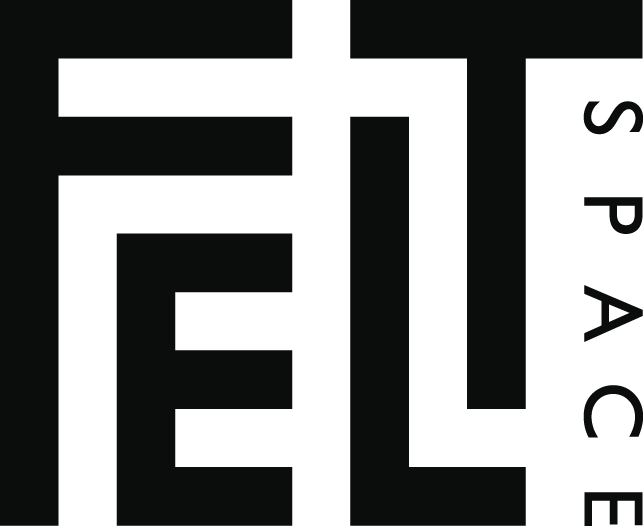Halloa (interjection)
A loud exclamation; a call to invite attention to something or to incite; a shout.
The latest exhibition at FELTspace, including work from Siying Zhou, Carolyn Craig and Aleda Laszcuk, takes into consideration art’s ability to educate and its desire for social justice, bringing together three artists looking at themes of othering, privilege and death.
Siying Zhou centres her exhibition Calling The Dead around the town of Ararat, a town that boasts its title as Australia’s only town founded by Chinese immigrants. Calling The Dead plays out like a tennis match of documentation. Including six screens in the front gallery, the timing of the videos meanders through a loop of roughly 30 minutes, jumping across screens, one speaking to the other. In the middle of the room are images of gravestones, with a voiceover reading out the engraved names. On the left wall is Henry, speaking of funding issues and future projects to be done at the Gum San Heritage Centre in Ararat. On the right wall is Heather, who talks of the difficulties of finding the right names and dialect to put on the headstones which prior to Gum San, “were just numbers in the ground”. The last two screens, situated at a low angle, show the grave stones being dug into the ground, and a blank screen as it’s mirror image, as a call for contemplation.
The style of editing renders the interview as disorientating and difficult to follow. One screen fades to black as the other begins again, sometimes both playing at the same time, while the captions for both Henry and Heather are included on the same video. At the forefront of the exhibition’s interviews are two white Australians, suggesting a white saviour narrative. The exhibition engages critically with Australia’s perception of immigrants, bringing forth these issues in it’s outwardly documentary style, combined with experimental editing.
At risk of virtue signalling, Zhou’s exhibition brings forth the issues within Australia’s perception of culture, colonisation and its history. Reaching from the ceiling to the floor, is the work A portrait at Langi Ghiran state park. The digital scan, displayed on a curtain, is portrayed as an extension of the editing style in the video works, where the film photograph of dense bushland is partially obscured by a slice of black fabric, stitched together. This could be seen to symbolise Australia’s colonisation as a black mark in history that is first and foremost written by, and in favour of, Europeans.
The appropriated LED sign, flashing the word “Halloa”, situated above the doorway to the back gallery, provides a link to Carolyn Craig’s exhibition Bacterial Nervosa.
Combining performance, photography and sculpture, Craig’s sculptures of folded aluminium sheets with etchings and printed images taken from a performance by Craig, act as an imitation of breathing: the inflation of a chest upon a deep inhale; the triangular breathing pattern of meditation.
The sounds of gendered slurs, those typically aimed at women, seep out of the earphones that sit atop the petri dishes, that have slowly grown black mould since installation. Portrayed in black and white images, Craig performs her interest in respiratory intricacies, in static movements, and swirling, scratchy etchings symbolising the artist’s erratic breathing creates a link to the exhibition’s title using the Latin word Nervosa, nervous.
Formally speaking, Aleda Laszczuk’s film draws parallels with Craig and Zhou’s work in its white palette becoming tainted by the past: a damp towel hung on the railing in the bathroom; greasy finger marks left on the light switch; the vase in which to put the flowers gifted, that one time. Objects in a domestic space are marked by the experiences surrounding them. Dust collects in corners and spreads when stirred. The screaming white of the projection during the FELTdark showing mirrors the institution of the white cube gallery space, which spills out onto the street of Adelaide CBD.
How can art make an impact? How can it aid in overcoming a sadness so profound after heartbreak? What weight can art carry when racism is so deeply ingrained in some, women are still unsafe to walk home alone at night, and fires and floods continue to damage cities and landscapes?
